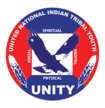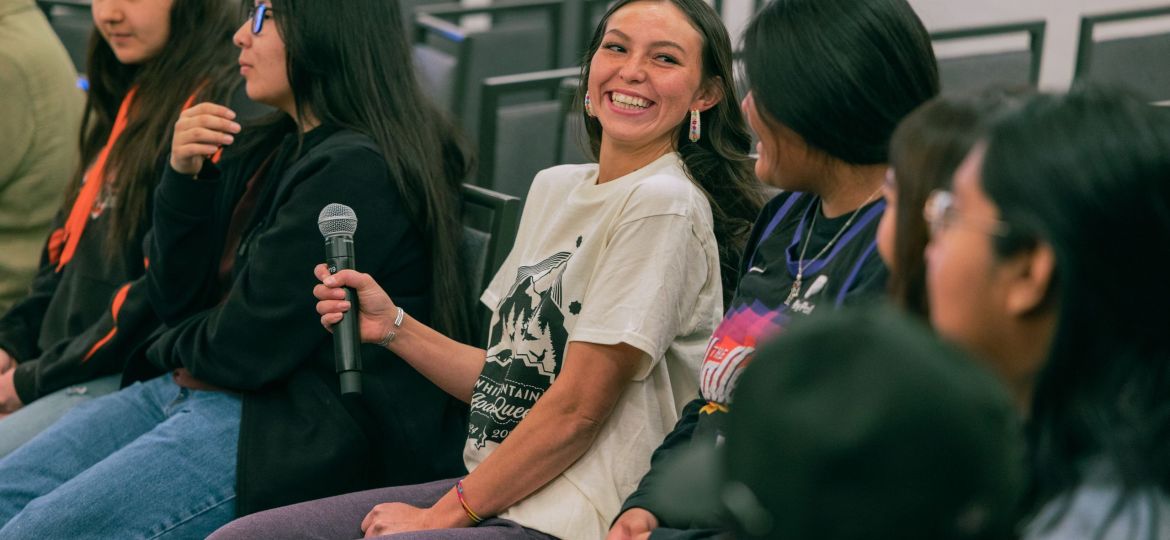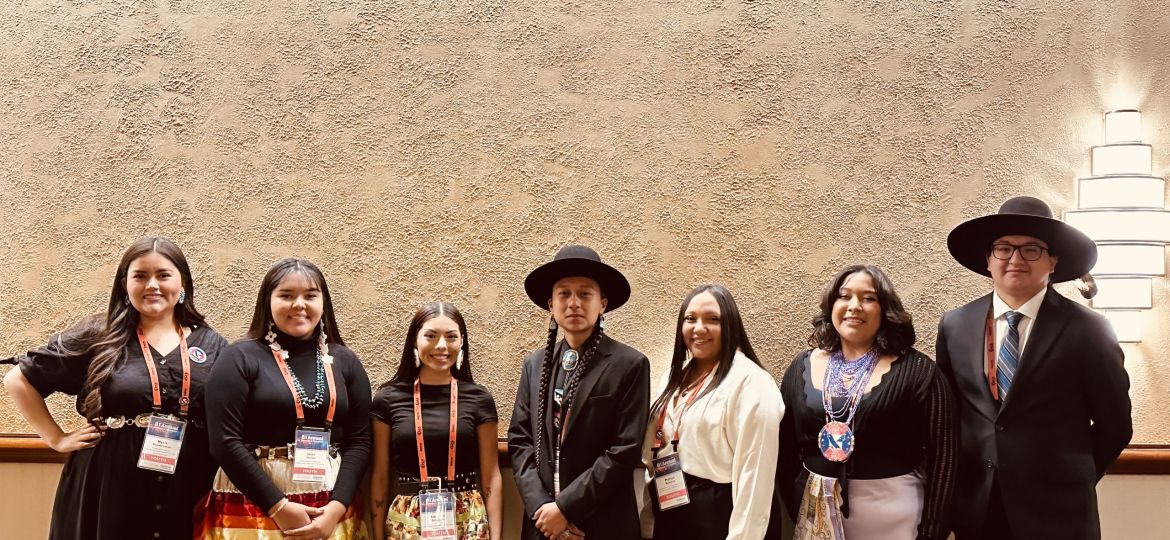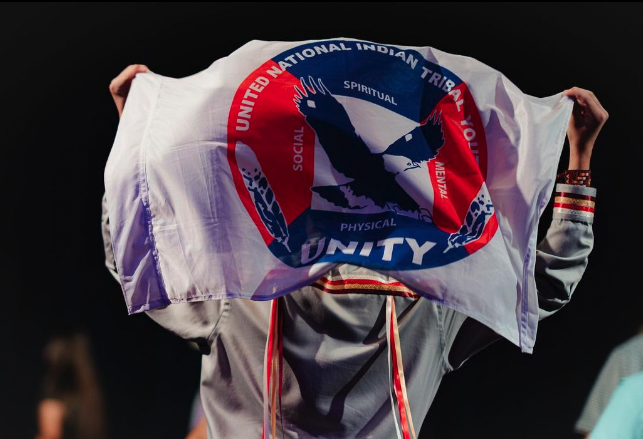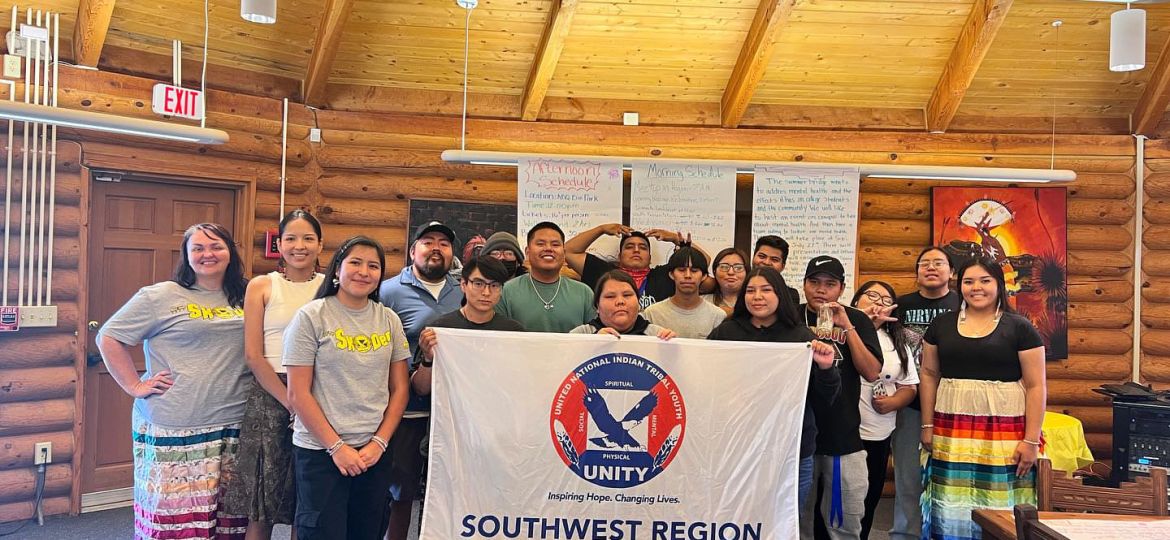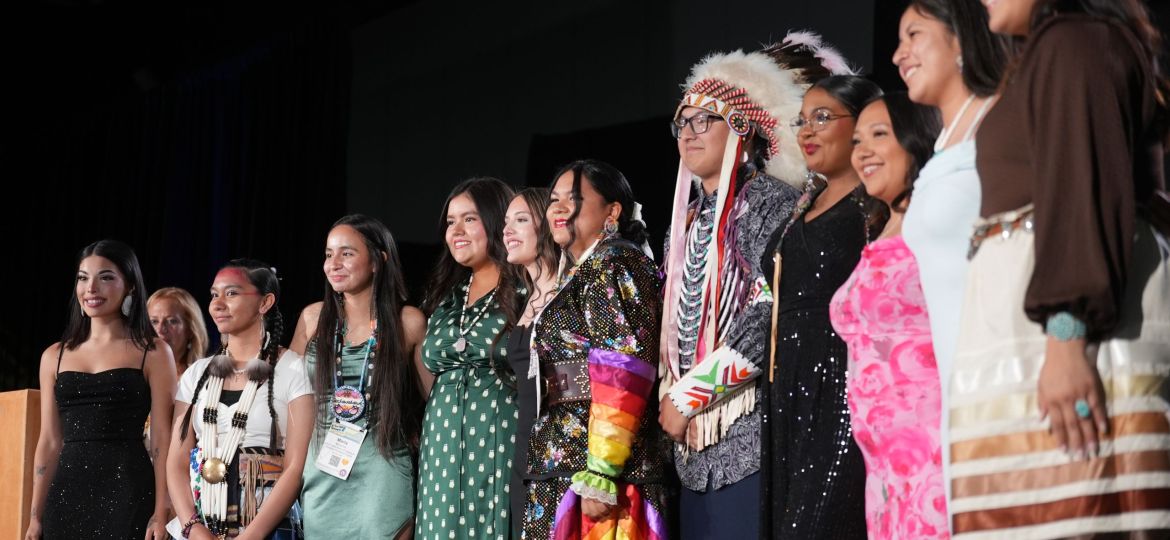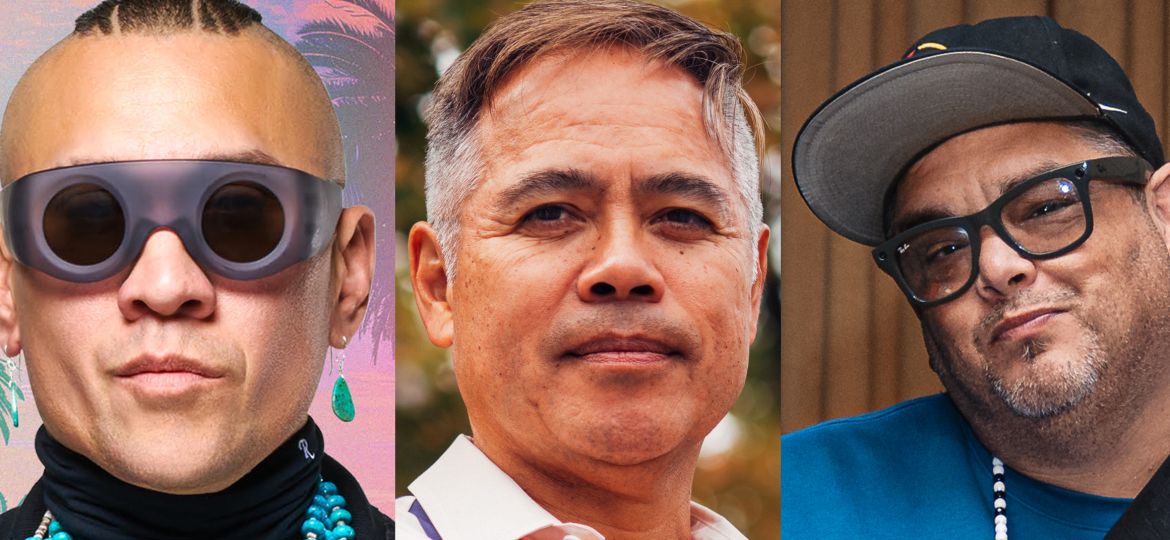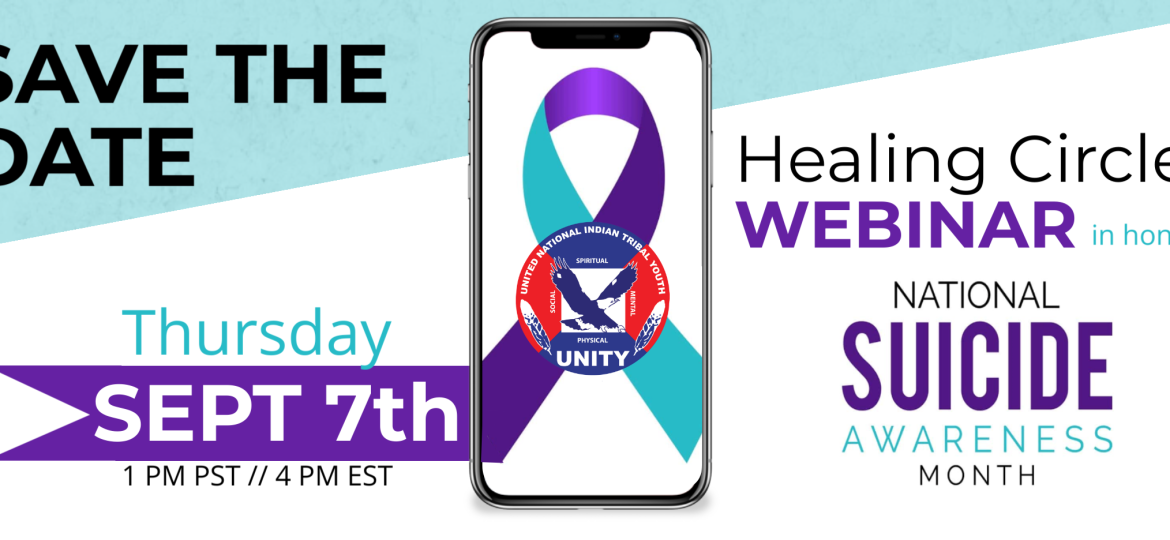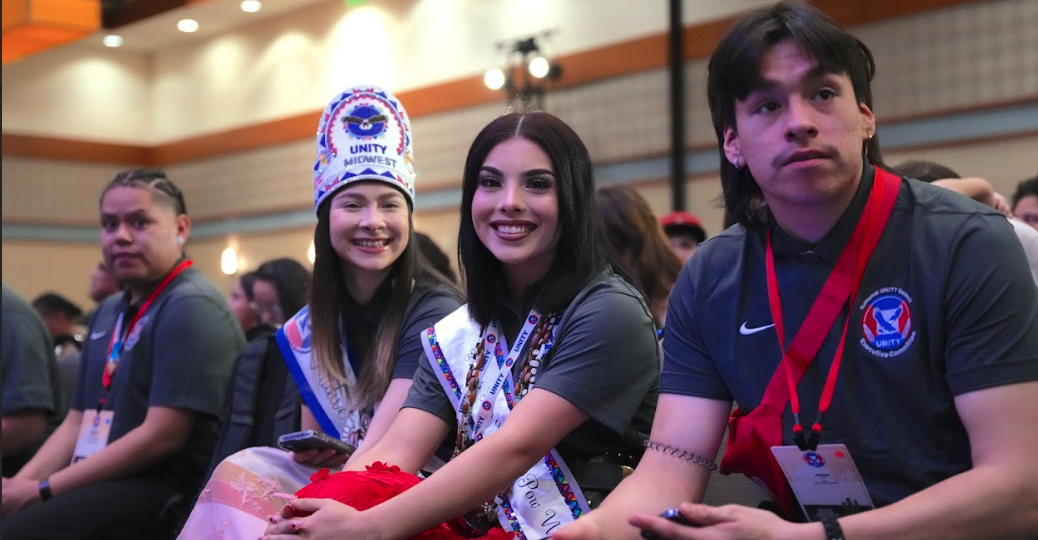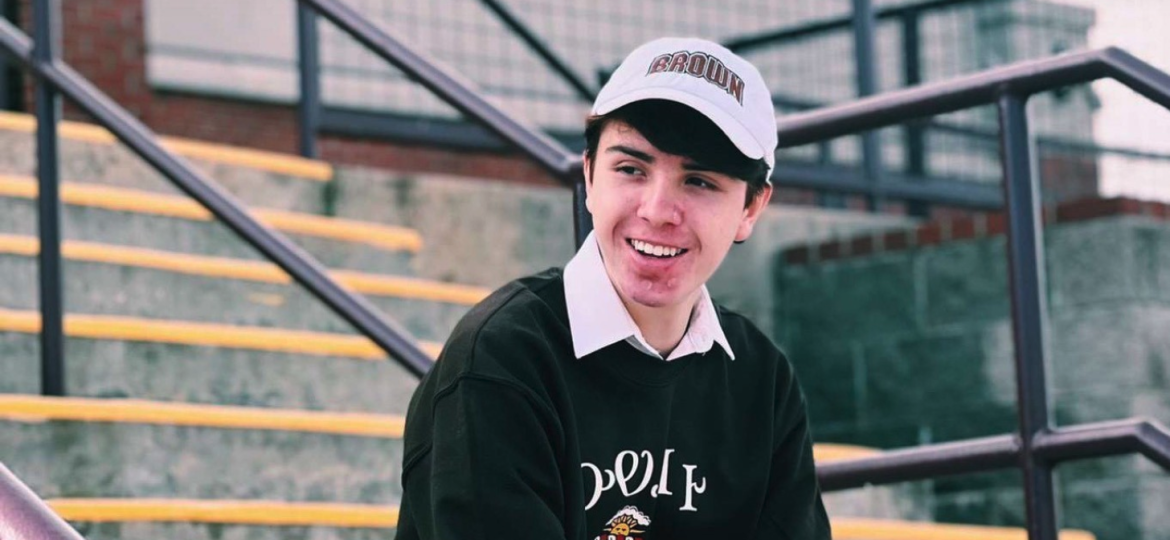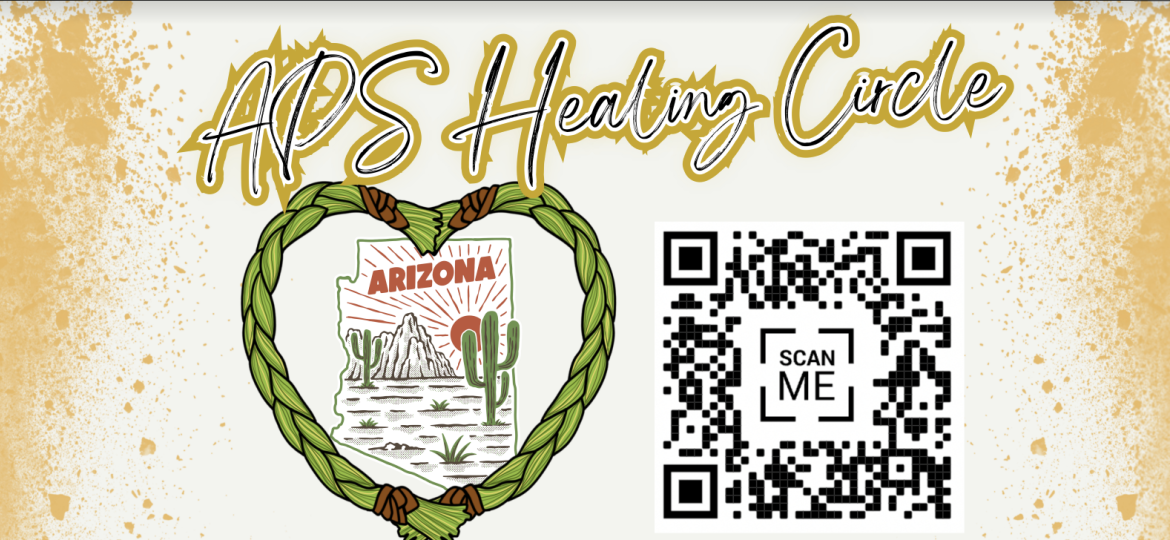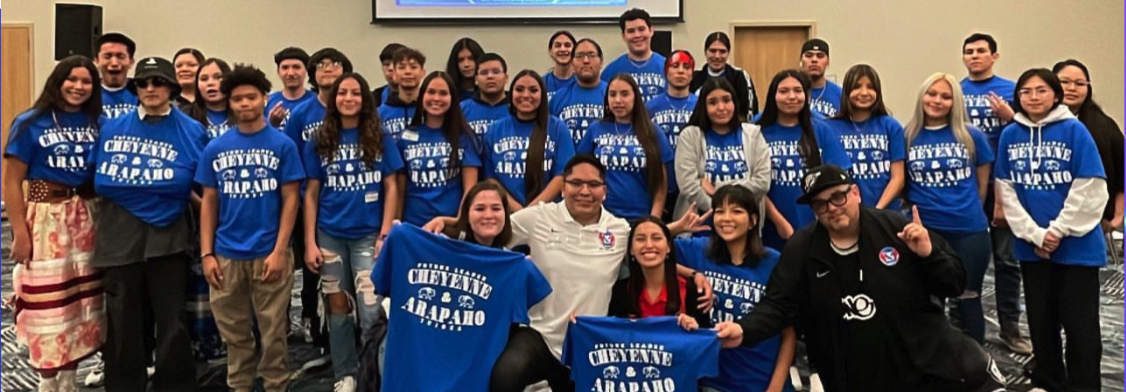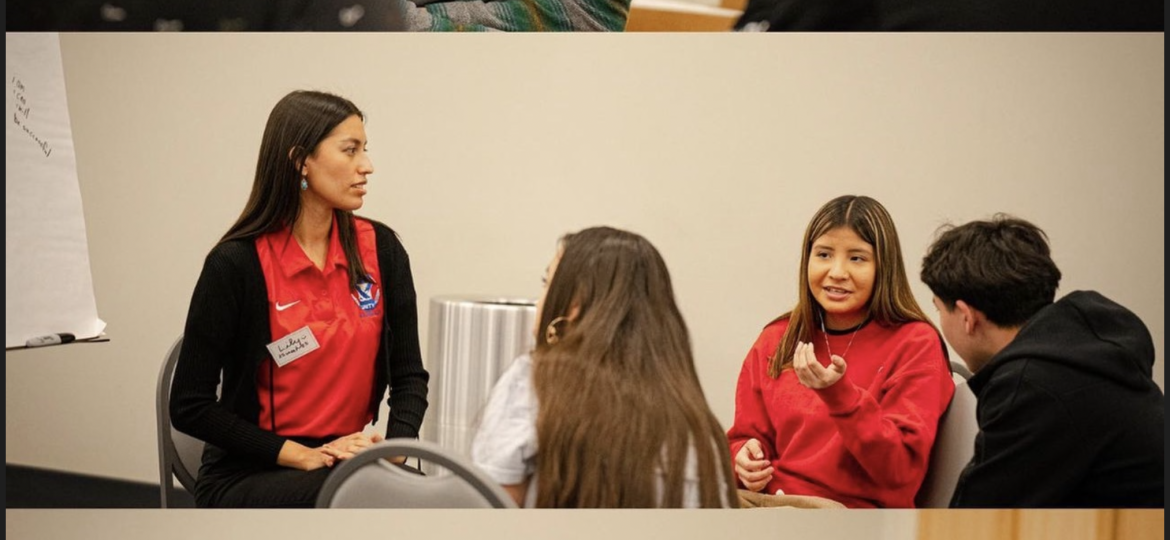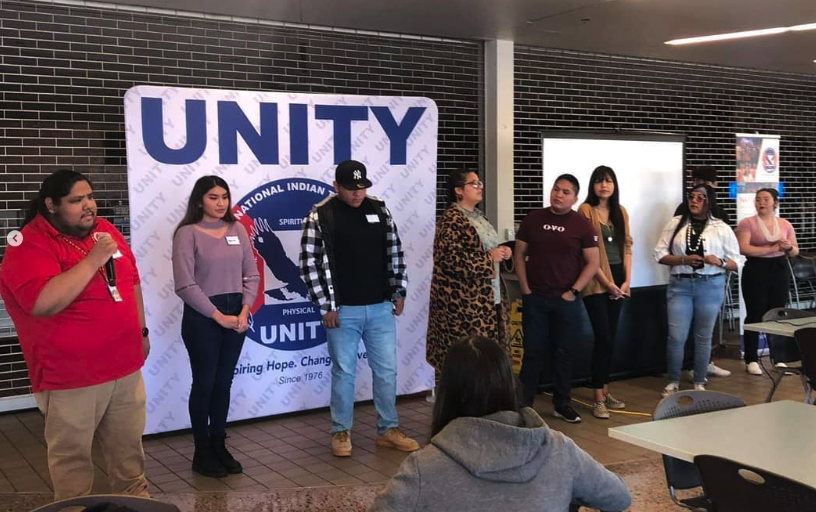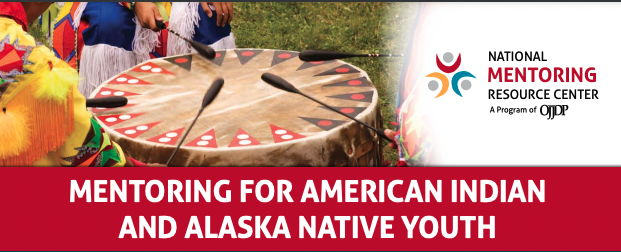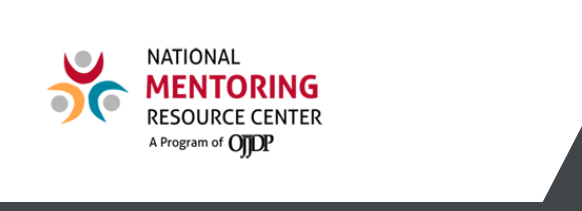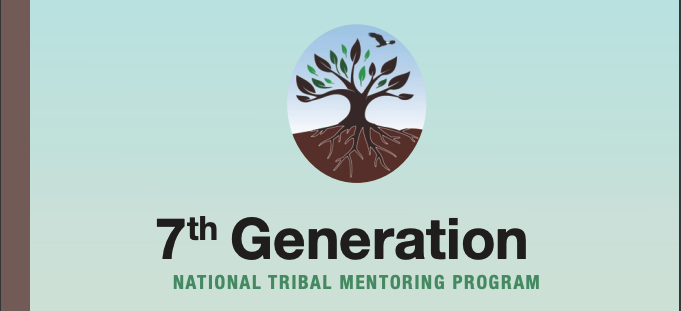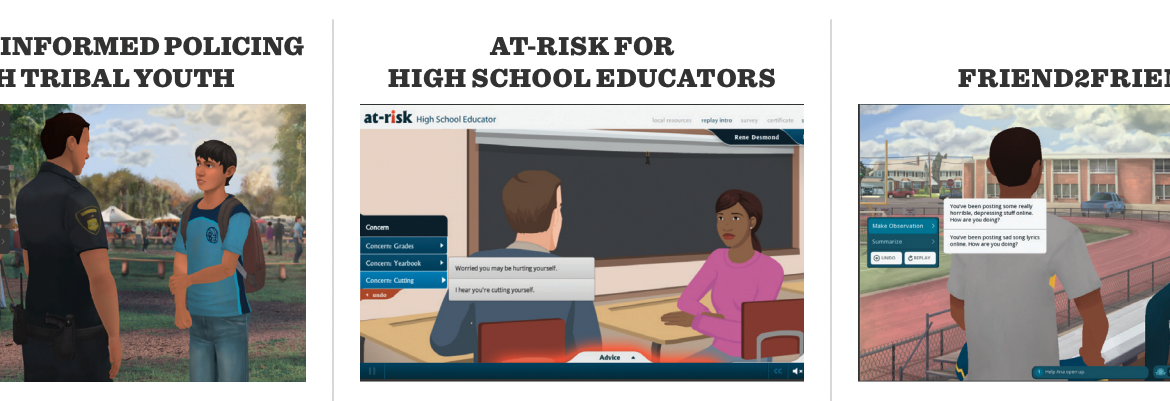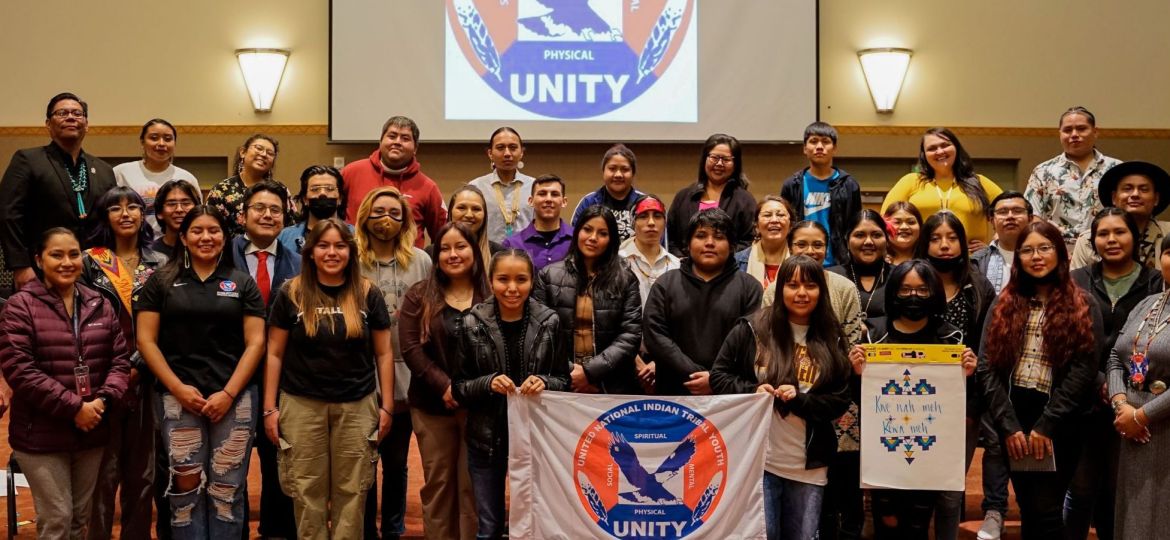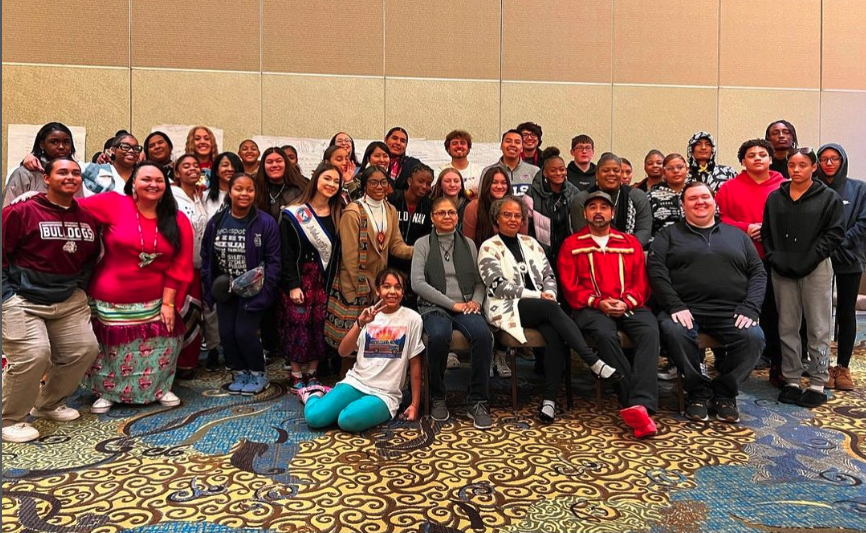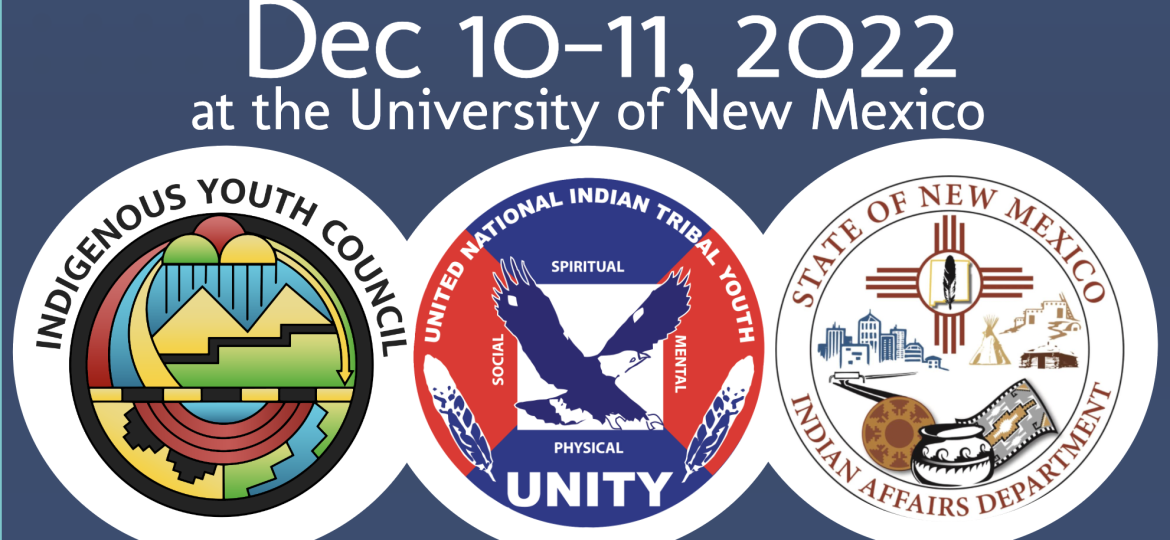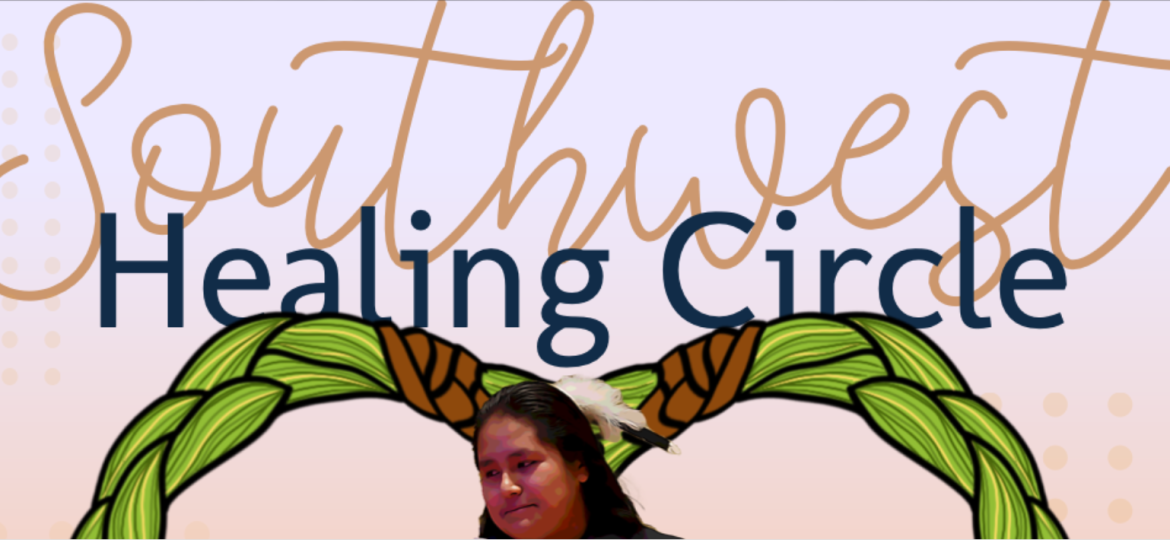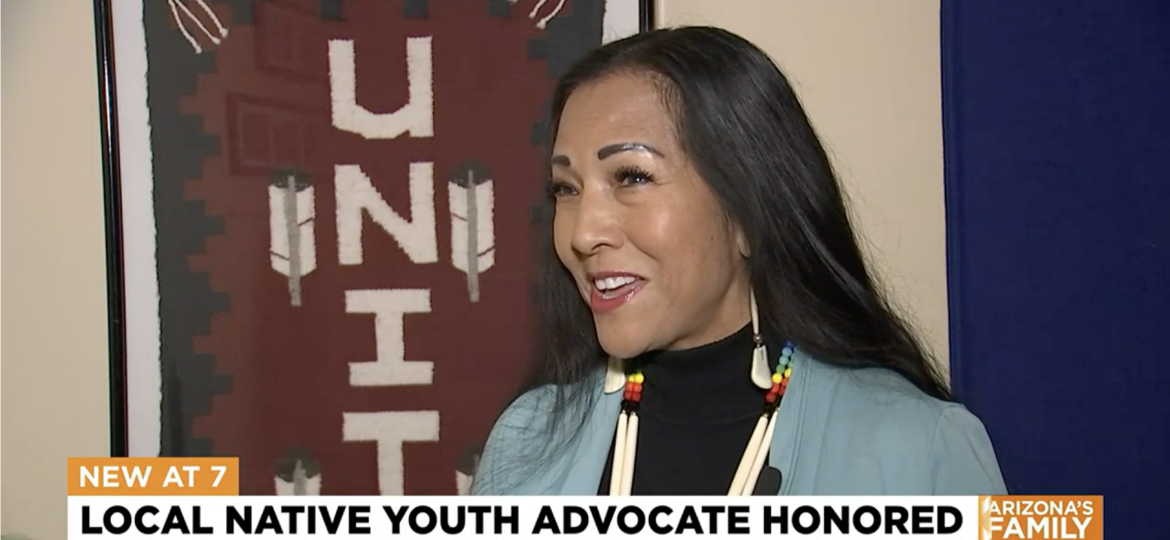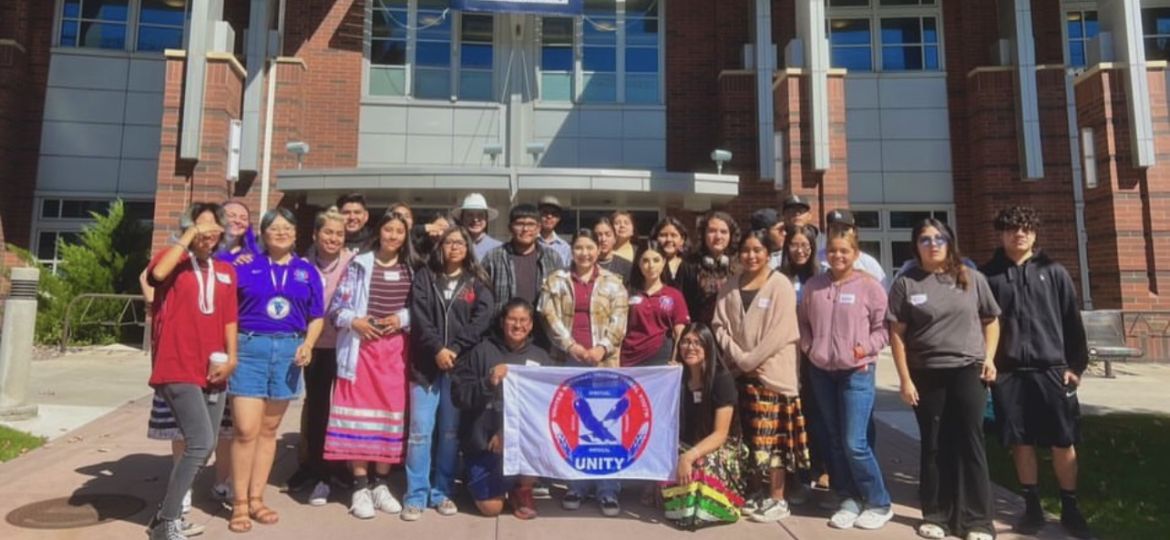Healing Indigenous Lives Initiative
The project builds on the successes of the past Office of Juvenile Justice and Delinquency Prevention (OJJDP) National Intertribal Youth Leadership efforts and the Today’s Native Leaders program. The initiative will support and enhance Native youth engagement, coordination, and action related to public safety issues, with a focus on juvenile justice and delinquency prevention in Indian country. UNITY will be recruiting a diverse group of youth leaders and mentors, who will design and facilitate intensive training in critical aspects of juvenile justice and delinquency prevention efforts for cohorts of youth throughout the country.
For More Information, contact Program Manager LorenAshley Buford at la.buford@unityinc.org
OJJDP Publications:
Healing Indigenous Lives Native Youth Town Halls
This report presents the proceedings of four Native youth-led Town Halls held virtually to provide Native youth the opportunity to share their concerns about public safety and tribal juvenile justice issues, and included are youth responses to a survey following the Town Halls.
Tribal Youth Offer Feedback to OJJDP
The sessions offered a unique opportunity for Tribal youth to talk about how they deal with trauma and provide recommendations for UNITY and OJJDP to enhance their engagement with youth and bolster their resilience.
OJJDP Tribal Youth Initiatives
Through the Healing Indigenous Lives Initiative, OJJDP helps to promote leadership skills in Tribal youth by engaging them in mentoring, peer-led trainings, and community service projects that reduce risk factors for delinquency. OJJDP designed the funding to be flexible to accommodate each Tribe’s unique culture, needs, and capacities.
• Young people will receive training to serve as peer leaders who will provide training, mentoring, support, resources, information, and other assistance for their peers in efforts to increase public safety and creatively prevent and address juvenile delinquency.
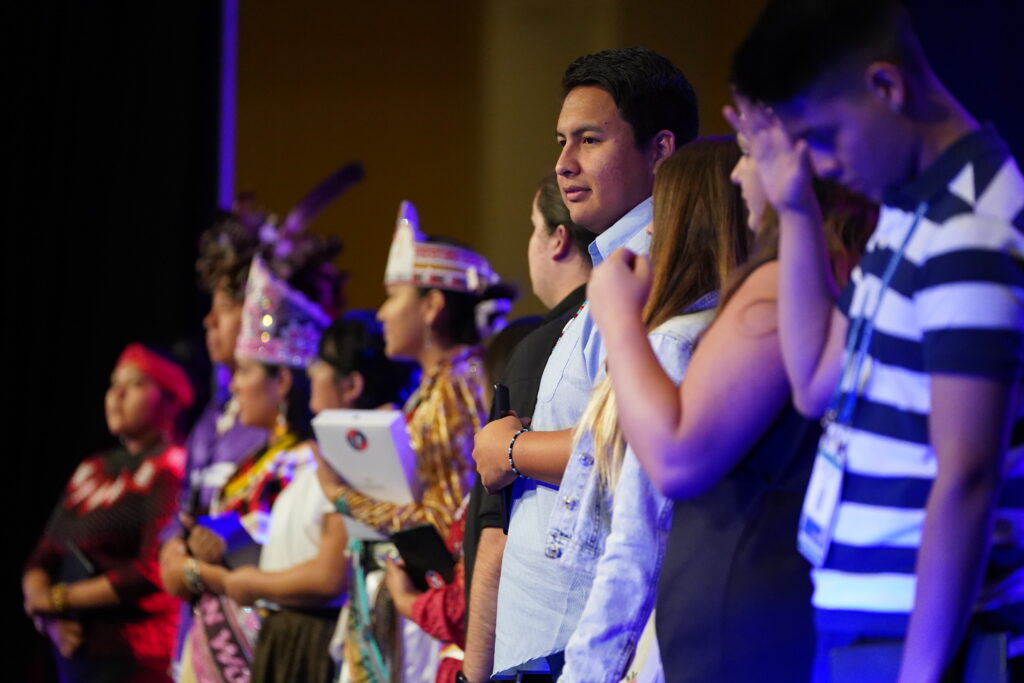
The 2019-2021 Peer Guides were asked.
“What would you tell a Native Youth who struggles to see themselves as a leader?”
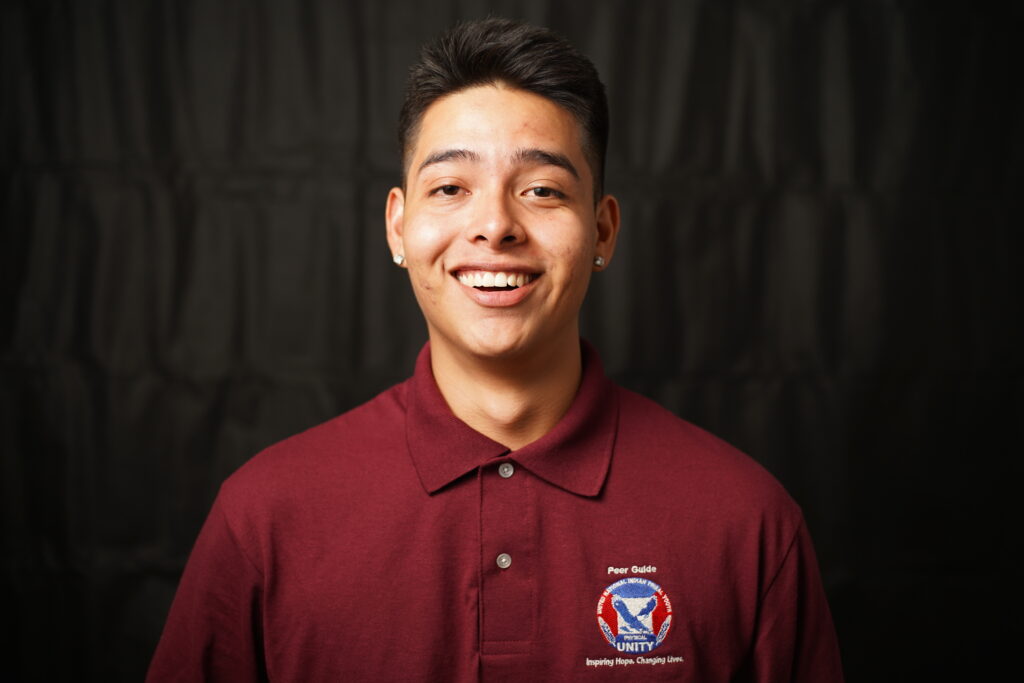
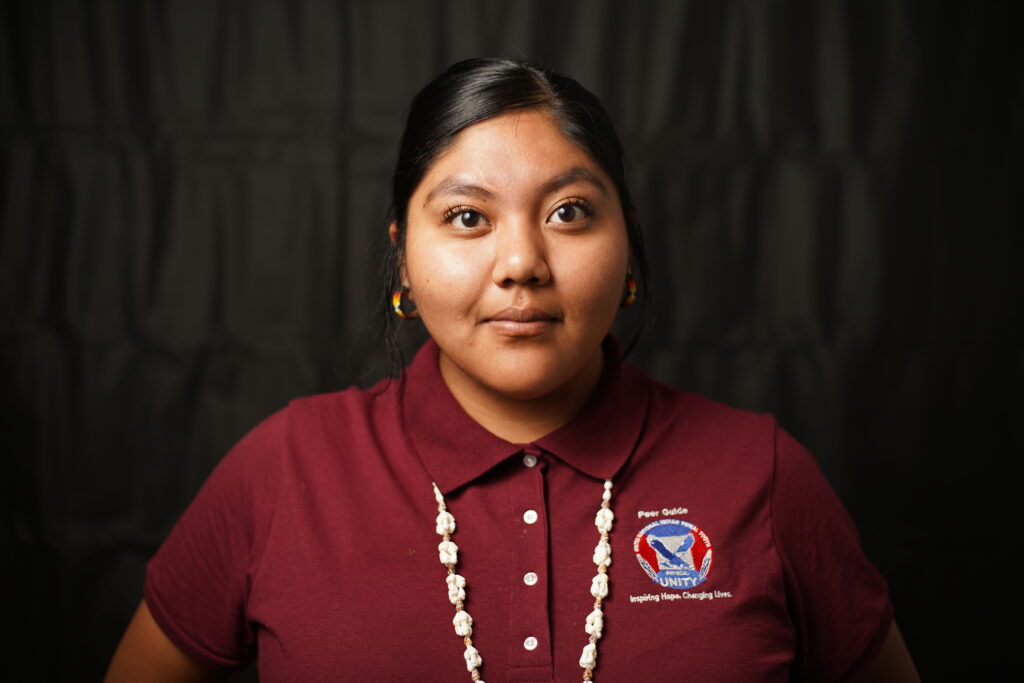
Now, Ms. Wakayuta promotes cultural awareness, diversity, and environmental stewardship among her peers and communities. She is eager to find creative, imaginative ways to advocate for healthier, stronger people, starting with the youth of tomorrow. Hankyu.
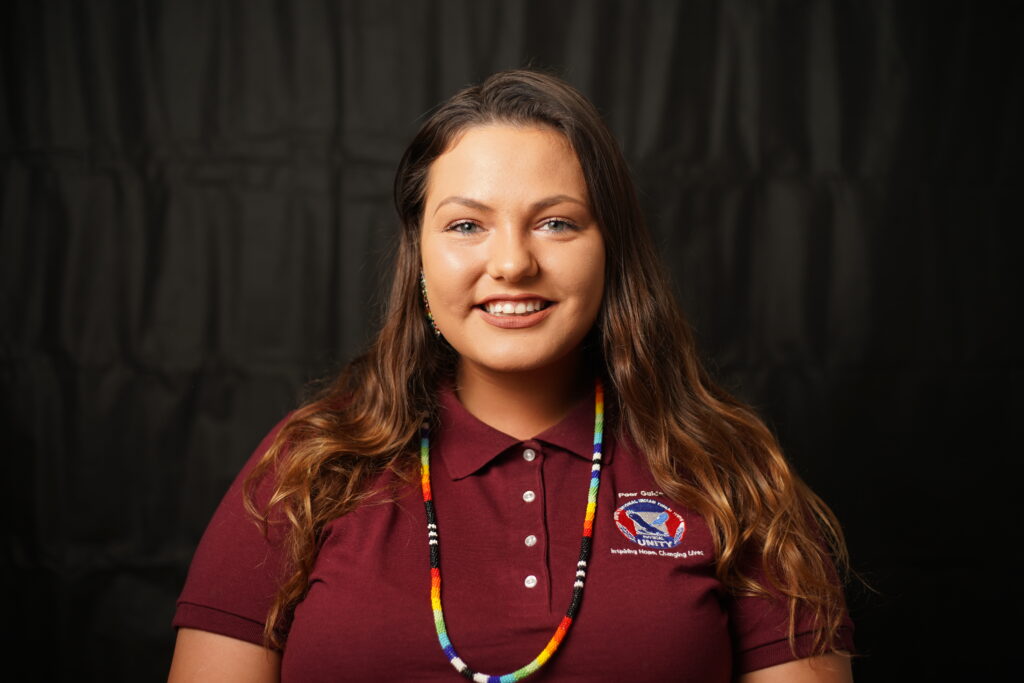
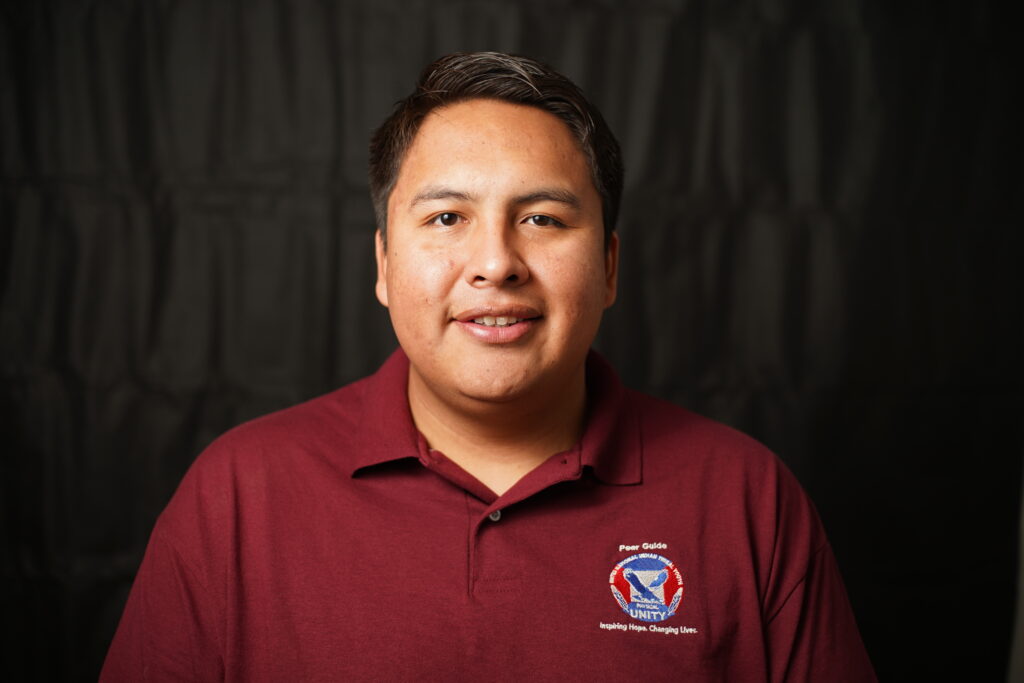
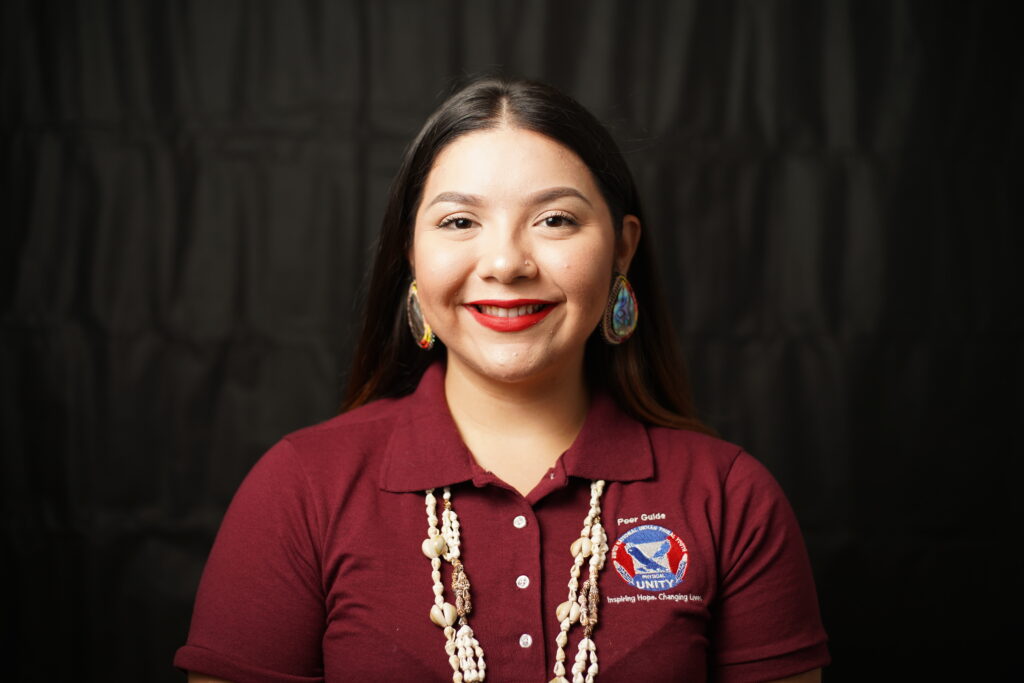
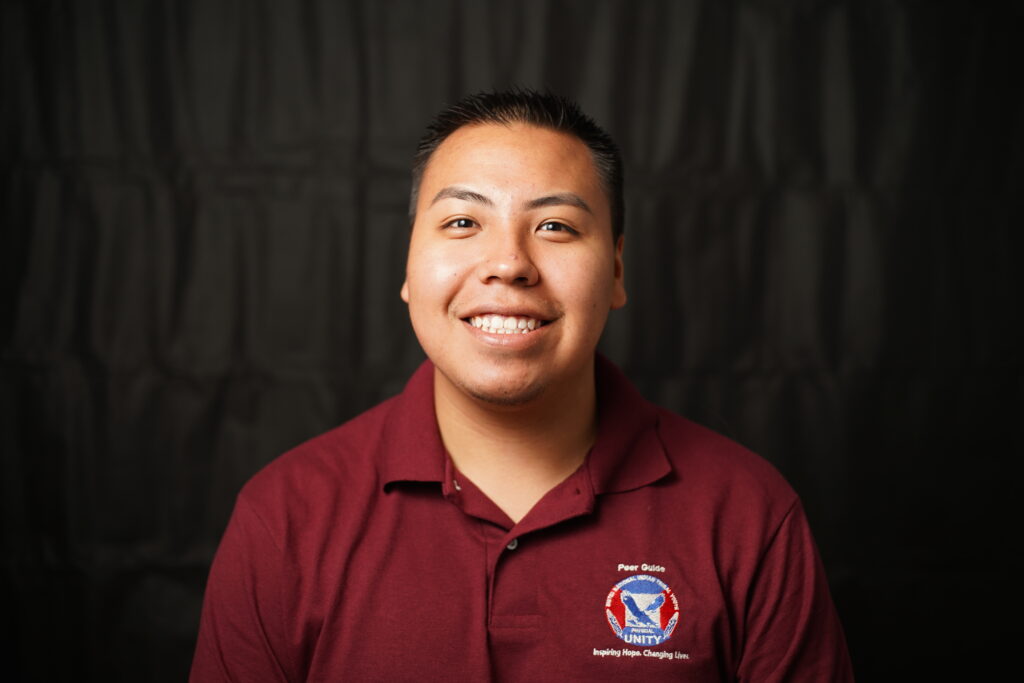
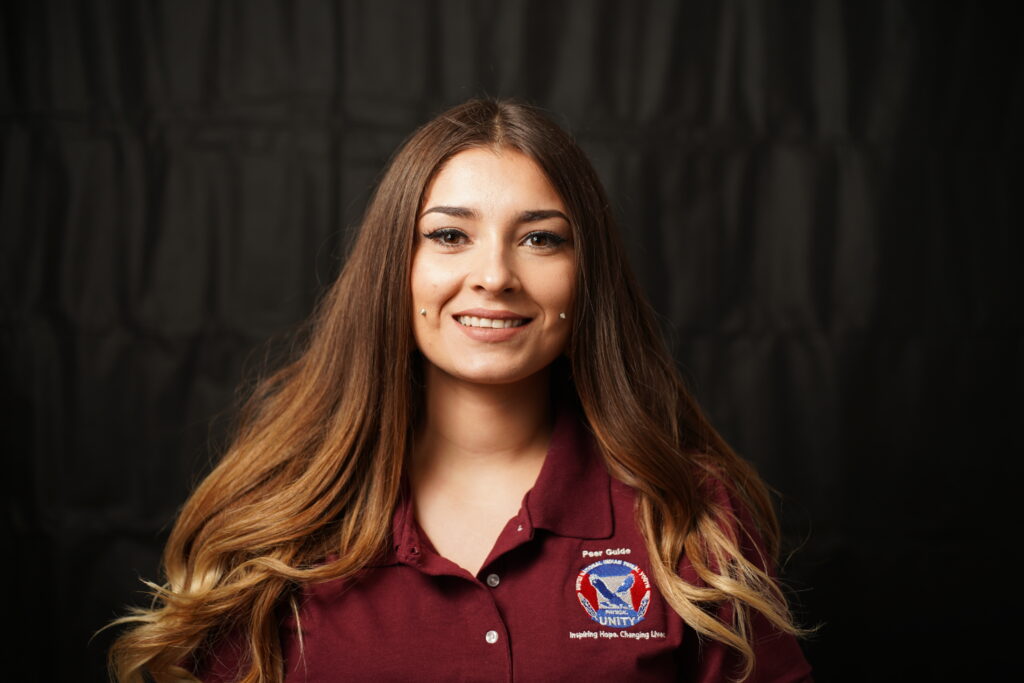
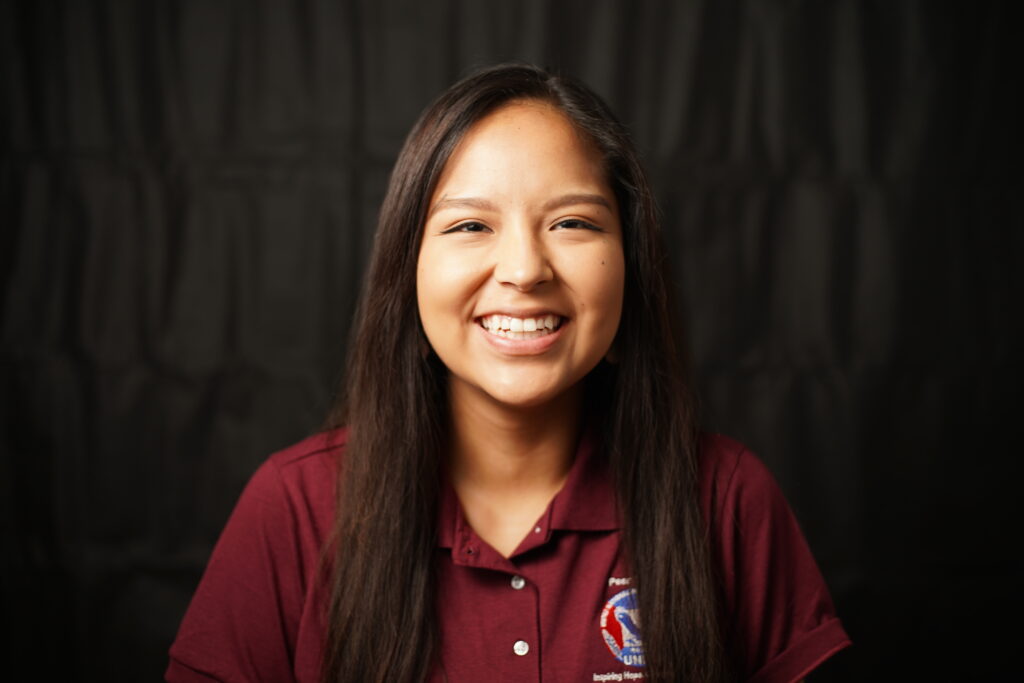
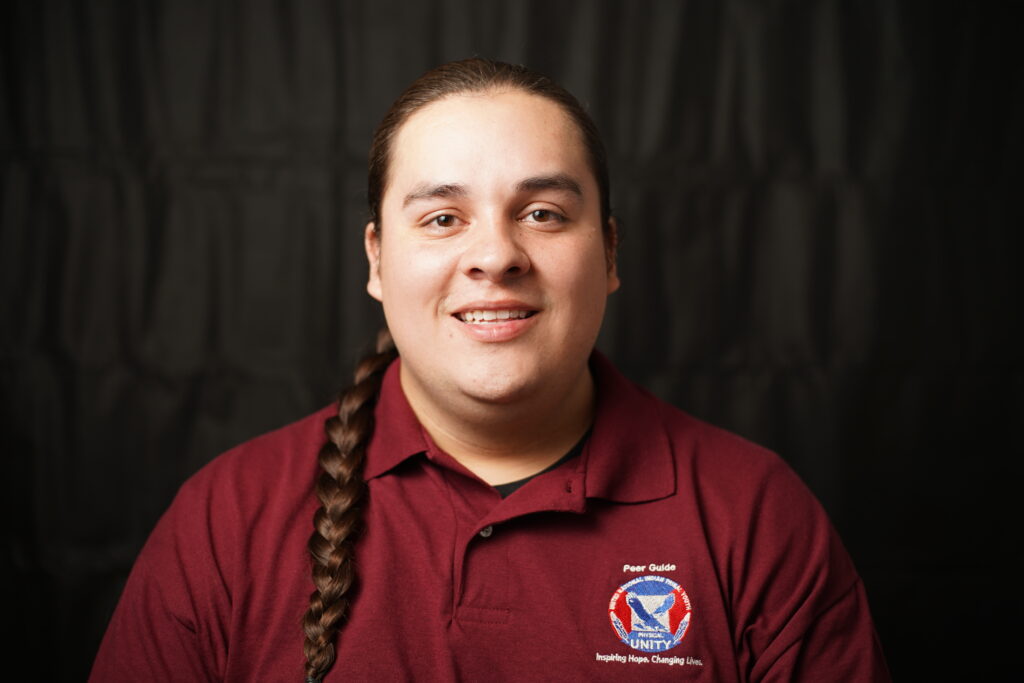
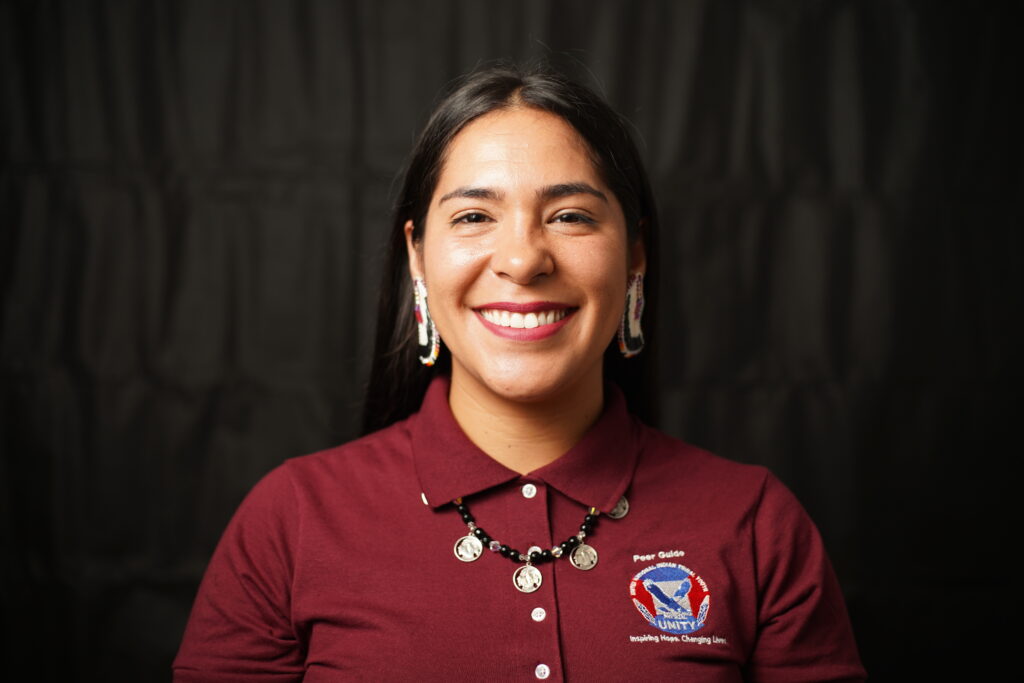
Miss Indian World 2019-2020
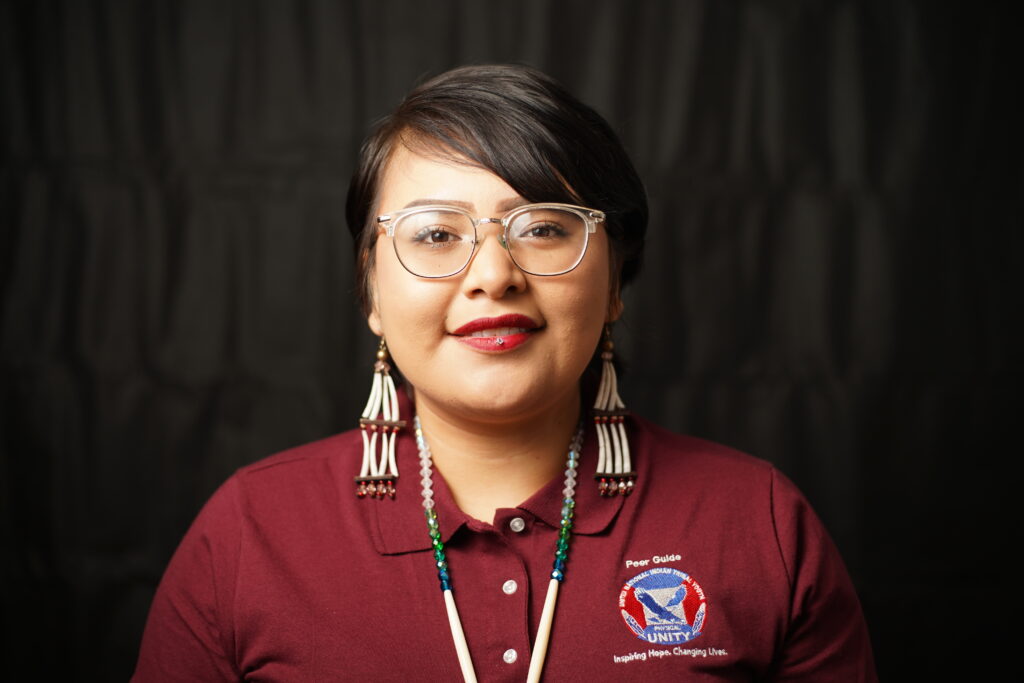
You are fighting that same fight. We will continue to keep fighting until our women stop going missing until our men heal until our peers stop wanting to harm themselves until treaty rights are honored, and until our tribal Nation heals. We are the new ancestors, and we must act accordingly. You are a leader. There are too many issues and precious time to not waste in doubting ourselves. Trust your abilities and implement them. You have a whole community that needs you and is rooting for you,” said Noah.
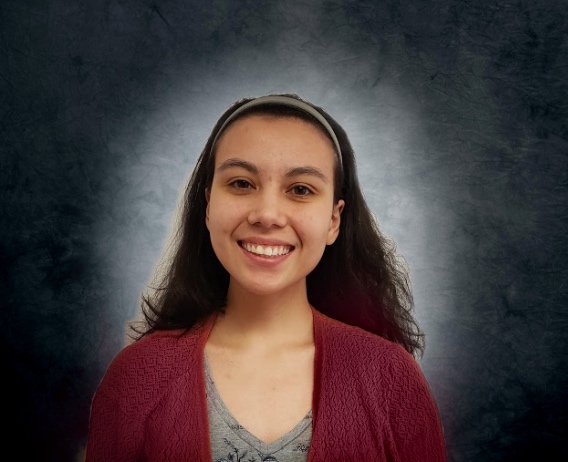
“I would tell Native Youth that struggle to see themselves as leaders that they have resiliency in their DNA, that sometimes it takes someone who has been low and lost before to connect to others that are feeling that way, that they have a unique perspective and so much potential to enact change and that the best leaders are those that give hope to others,” said Storms.
Youth to Youth Dialog: UNITY recruited a diverse group of youth mentors, who helped design, plan, and conduct training for Native youth in critical aspects of juvenile justice and delinquency prevention. The Town Hall discussions were facilitated by youth from each of the four time zones. Peer-to-peer interactions are vital to building a solid support system.
Town Hall Overview
Town Hall Overview
Town Halls: Four Native youth-led Town Halls held virtually in August 2020 provided an opportunity for young participants to share concerns about tribal juvenile justice systems to help develop informed responses that improve outcomes for Native youth, enhance public safety, promote accountability and empower communities. The Town Halls targeted Native youth ages 14-24 years old. The Town Halls were recorded and transcribed to increase community involvement.
Elders: Native youth expressed how understanding intergenerational relationships and engaging in cultural activities created safety in their communities. The Town Hall discussions show the cultural significance that elders hold in Indigenous cultures as a community asset and core of Native households. It is common for youth to be raised by their grandparents and live in extended family homes in many communities and homes.
COVID-19: Native youth referenced the Covid-19 pandemic in their responses. Multiple people stated that they felt safe when they saw people wearing masks in public places. Many related feeling safe with increased or heightened public health awareness efforts to help protect family members and community members.
Police, First Responders, Community Patrols: While not all Native youth feel safe around police officers in their communities, there was a common theme across the different regions during the Town Halls on how law enforcement and community support agencies made them feel secure. Many Native youth listed the police as both a challenge and a community strength to public safety in responses submitted from all the Town Halls. Some youth listed “police violence” and “racist police” as the root cause of them feeling unsafe. “I get panic attacks when I see police, even when I know I’m not breaking the law.” When even one youth feels unsafe, it is our responsibility to address the challenge. Natives are incarcerated at higher rates than other races, which directly impacts a breakdown in family structure.
Both views on community safety are important to validate and acknowledge. This reflects the diversity in tribal communities’ relationships to their law enforcement, which varies on and off Indian reservations, tribal or non-tribal police, and rural and urban communities.
Violence: Research shows an urgent need to improve Indian nations’ federal resources to address safety issues in their communities. The Tribal Law and Order Act of 2010 (TLOA) and the Violence Against Women Reauthorization Act of 2013 (VAWA 2013) stand as historic steps forward in restoring safety, especially to Native women, who experience violence at rates 2½ times higher than violence against any other group of women in the United States.
High Dropout Rates: During the Town Halls, Native youth expressed many reasons why education disparities were a community concern. “Many Native youth experience Imposter Syndrome because the educational institutions are built upon the assumption that indigenous methodologies are inferior,” said Pacific Peer Guide Angela Noah.
Native Youth Empowerment: Speaking out about past traumas can be a source of empowerment for Native youth. Native youth who have been exposed to trauma within their communities have become leaders to be a part of solution-based thinking to increase public safety.
Native Youth Resiliency
What does resiliency mean? During the Town Halls, Native youth expressed what resiliency meant to them. While exploring how youth overcome difficult or traumatic situations in their lives, one common answer centered around inherent resiliency. “To me, resiliency is a double-edged sword. While I am grateful for how our people have this inept ability to overcome the odds in so many traumatic situations, I also see first-hand the social, emotional, and mental turmoil it takes on our youth. And yet we continue to push this idea of resiliency and overcoming but at times, I feel like we need to impart more grace.” – Peer Trainer, Dr. Leslie Locklear, Eastern Region.
Engage Your Leadership: In July 2020, UNITY Peer Guides participated in a congressional forum led by Ruben Gallego (D-Ariz.), chair of the Subcommittee for Indigenous Peoples of the United States. The subject of the hearing was Native Youth Perspectives on Mental Health and Healing. (click to watch) Peer Guides discussed the mental health impacts facing Native youth in the United States, education and safety, and ideas on how policy can reduce trauma and promote healing.
Leading by Example: UNITY Peer Guide Cheyenne Kippenberger, of the Seminole Tribe of Florida, partnered with the Native Learning Center to host its first “Healing the Circle in Our Tribal Communities Symposium” in Hollywood, Florida. The symposium’s focus was to stress the importance of safe and healthy environments for Native people and increase awareness about domestic violence, self-care, elder abuse, and Missing and Murdered Indigenous Women.
We’re Stronger Together: “Learning that, even though you feel like you’re alone, you’re not alone… that’s resilience. There’s a lot of youth; when something traumatic happens in my community, we just brush it off, but that’s the reaction that comes from being resilient for too long. Even when it’s hard… it’s better when we help carry it together.”
– Central Region Native youth.
Wellness Courts: “Operate more Juvenile Healing to Wellness Courts. I also think there should be more group homes where our juvenile offenders will have a place to stay instead of being held in detention centers. I think the group homes should be located on Tribal land and operated by people who have the compassion and empathy for the client but someone who can also give the client some structure in their lives” – Mountain Region Native youth.
Why so many? “Native youth are incarcerated at higher rates per capita than other races… That’s a systematic fault that needs to change to work better with the community and stop the violence against community members… This isn’t about blame. We need to focus on why there are so many offenders in the first place” – Central Region Native youth.
Holistic Approach: “In Alaska, a lot of our communities are not concerned with ensuring offenders are held more accountable; we are more worried about losing our youth to suicide, gang violence, and drugs. It is a slippery slope when you label kids as bad; then, their self-worth goes downhill. And I’ve lost too many friends that way. I don’t want them punished harder. I want to see them get the help they need to be who I know they can be. Who our villages need them to be” – Pacific Region Native youth.
Restorative Justice
Native youth voiced their concerns about the focus of punishment on juvenile offenders rather than rehabilitation or what is often referred to as a “healing journey.” Overall, healing and personal accountability are a community priority, which is seen to help restore wellness to offenders and victims, their families, and clans. UNITY Peer Guides agree that healing, along with reintegrating individuals into their community, is paramount.
Government to Government Relationship Building: One common theme mentioned in more than two Town Halls referenced by Native youth was the lack of trust of the federal government. Historically, tribal groups in the U.S. have suffered irreparable harm due to colonization, assimilation, and integration efforts led by the federal government. “Earn our trust by respecting our leaders, elders, and customs.” – Pacific Region Native youth.
Include Educators & Tribes: “Work closely with native educators and Tribal Governments to develop programs in the community to ensure funding’s effectiveness. We know our kids better than anyone. Help us help them.” – Central Region Native youth.
Include Youth: “Help us make the OJJDP system known and easily accessible to Tribes. Ask the youth directly how you can help. Have youth partner with our tribal leaders to help inform OJJDP of best cultural practices and what is needed to create lasting change” – Pacific Region Native youth.
By learning from past mistakes, you are Ensuring Accountability.
When you share your message with others, it will Empower Native youth.
The UNITY Peer Guides are here to help you.
Together we CAN heal our communities.
UNITY Peer Guide Community Impact
Excitement was building as the Midyear conference drew near. In Downtown Phoenix, Arizona more than 600 Native youth would gather…
Voices of Change: Kaytlynn Johnston Inspires Native Youth Leadership “This work is vital to me. It’s given me new opportunities…
Empowering Indigenous Women: Highlights from the Native American Women’s Conference On November 7th and 8th, the Wildhorse Pass Resort in…
In a powerful convergence of culture and leadership, UNITY’s Executive Committee traveled to Las Vegas, Nevada, to participate in the…
In a historic moment during the National UNITY Council’s (NUC) business meeting in Portland, Oregon, Native youth leaders from over…
For Jamie Crowe, a proud member of the Pueblo of Tesuque and the Southwest Representative on the National UNITY Council’s…
Each year, the UNITY (United National Indian Tribal Youth) Inc. movement stands as a beacon of hope, empowerment, and strategic…
United National Indian Tribal Youth, Inc. (UNITY) proudly announces the fantastic lineup for its upcoming National Conference, including world-renowned hip-hop…
Click Here to RSVP: https://us06web.zoom.us/j/82638612872 UNITY in partnership with WeRNative And THRIVE presents the Healing Circle Webinar in honor…
Join UNITY for this free training for Native youth and the adults who serve them. Sign Up today to attend…
Brown University, March 3, 2023, Pictured, above: Anagali (Shace) Duncan smiles in Brown apparel at his high school athletic field. Sequoyah High…
Join UNITY for this free training for Native youth ages 14-25 years old who live in Arizona. Sign Up today…
A relationship with a mentor can be a valuable resource for a young person during life’s critical moments. OJP.GOV Click…
Reflections of the New Years Healing Circle Training hosted by the Cheyenne and Arapaho Youth Council in Oklahoma. By: Nataanii…
As part of the three-day Healing Circle training, youth council members of the Cheyenne and Arapaho Tribes practiced how to…
Community Discussions & Resources
Brown University, March 3, 2023, Pictured, above: Anagali (Shace) Duncan smiles in Brown apparel at his high school athletic field. Sequoyah High…
A relationship with a mentor can be a valuable resource for a young person during life’s critical moments. OJP.GOV Click…
Click here to Read the full article on OJJDP News @ a Glance When Colby WhiteThunder first joined the Alabama-Coushatta…
Mentoring PUBLICATIONS & RESOURCES AVAILABLE TO NATIVE YOUTH The mentoring literature focused on American Indian and Alaska Native youthi is growing,…
OJJDP PUBLICATIONS & RESOURCES AVAILABLE TO NATIVE YOUTH OJJDP-Sponsored, October 2017. This fact sheet provides information about the Safe Routes…
Mentoring PUBLICATIONS & RESOURCES AVAILABLE TO NATIVE YOUTH This resource contains tips and recommendations for mentoring practitioners for enhancing cultural…
OJJDP PUBLICATIONS & RESOURCES AVAILABLE TO NATIVE YOUTH Model Programs Guide Literature Review: Tribal Youth in the Juvenile Justice System…
Mentoring PUBLICATIONS & RESOURCES AVAILABLE TO NATIVE YOUTH Often these programs emphasize mentoring relationships for youth who are early in…
Mentoring PUBLICATIONS & RESOURCES AVAILABLE TO NATIVE YOUTH The Kinship Mentoring Framework Group Session Facilitator’s Guide reflects the lessons learned…
Learn more at the Tribal Youth Resource Center’s Blog July 11, 2022 by Kaitlin Martinez Tribal Youth Resource Center’s Guest…
OJJDP PUBLICATIONS & RESOURCES AVAILABLE TO NATIVE YOUTH Juvenile Justice and Delinquency Prevention Act Reauthorization 2018 OJJDP Produced, December 2018….
OJJDP PUBLICATIONS & RESOURCES AVAILABLE TO NATIVE YOUTH OJJDP-Sponsored, October 2017. This information sheet provides Tribal communities tips on how…
OJJDP PUBLICATIONS & RESOURCES AVAILABLE TO NATIVE YOUTH Child Protection FAQ and Guide for Tribal Communities OJJDP-Sponsored, October 2017. This…
OJJDP PUBLICATIONS & RESOURCES AVAILABLE TO NATIVE YOUTH Build the Skills To Support Tribal Youth OJJDP-Sponsored, November 2016. This brief…
OJJDP PUBLICATIONS & RESOURCES AVAILABLE TO NATIVE YOUTH Breaking the Ice: Creating a Dialogue With Youth OJJDP-Sponsored, October 2017. This…
Healing Indigenous Lives Trainings
Excitement was building as the Midyear conference drew near. In Downtown Phoenix, Arizona more than 600 Native youth would gather…
Voices of Change: Kaytlynn Johnston Inspires Native Youth Leadership “This work is vital to me. It’s given me new opportunities…
Empowering Indigenous Women: Highlights from the Native American Women’s Conference On November 7th and 8th, the Wildhorse Pass Resort in…
For Jamie Crowe, a proud member of the Pueblo of Tesuque and the Southwest Representative on the National UNITY Council’s…
Click Here to RSVP: https://us06web.zoom.us/j/82638612872 UNITY in partnership with WeRNative And THRIVE presents the Healing Circle Webinar in honor…
Join UNITY for this free training for Native youth and the adults who serve them. Sign Up today to attend…
Join UNITY for this free training for Native youth ages 14-25 years old who live in Arizona. Sign Up today…
Reflections of the New Years Healing Circle Training hosted by the Cheyenne and Arapaho Youth Council in Oklahoma. By: Nataanii…
As part of the three-day Healing Circle training, youth council members of the Cheyenne and Arapaho Tribes practiced how to…
“Healing Circles are becoming the new wave! As they should be, they offer kids a platform to express their feelings…
The National UNITY Council’s Northeastern Representative Nathan Solorio, also recently awarded the prestigious 25 Under 25 award, has been traveling…
FOR IMMEDIATE RELEASE Contact: Sherrie Catanach, NM Indian Affairs Department Sherrie.Catanach@iad.nm.gov UNITY Mary Kim Titla, (480) 718-9793 mk.titla@unityinc.org Mesa,…
Join UNITY for this free training for Native youth ages 14-26 years old. Sign Up today to attend the…
PHOENIX (3TV/CBS 5) – A local Native youth program called UNITY has been awarded $200,000 in a racial equity grant from…
“The Nevada Healing Circle brought Native youth, peer mentors from various high schools to young adults in higher education to…
